If you’re new here, let me catch you up.
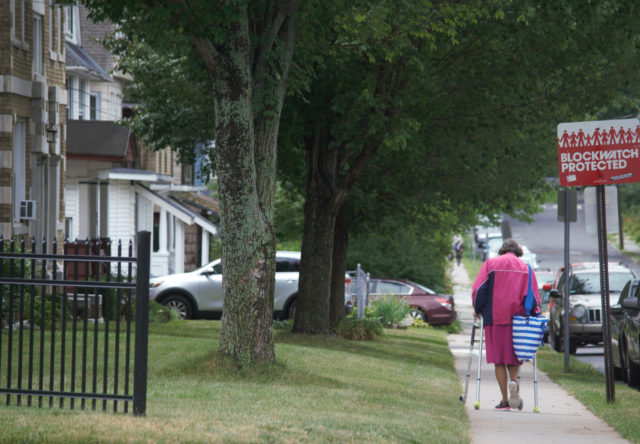
The “Ghost Town” limited series is my way of calling bullshit on the haters who have literally called Hartford a ghost town, or who have made similar statements that are best described as conjecture.
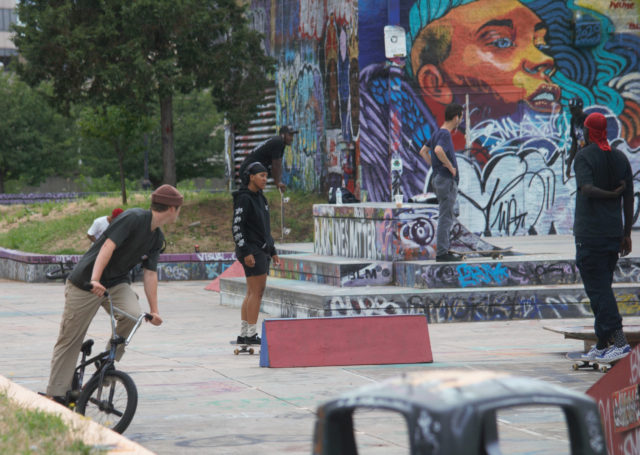
The other thing to know is that I spend more time than anyone should without getting paid for it, thinking and writing about mobility issues.
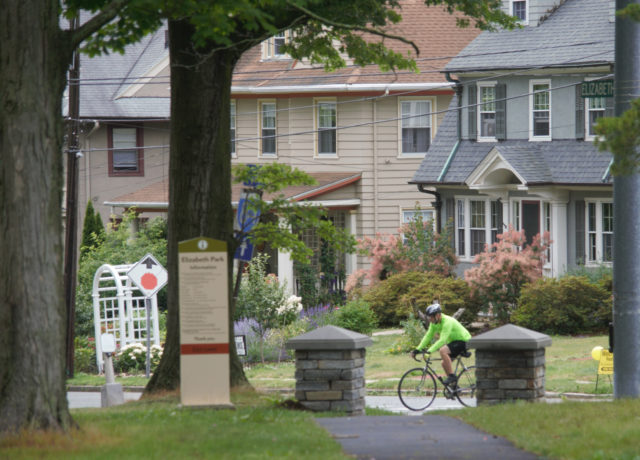
Widespread beliefs about access and mobility safety echo those of violent crime in that people tend to have a warped ability to assess risk.
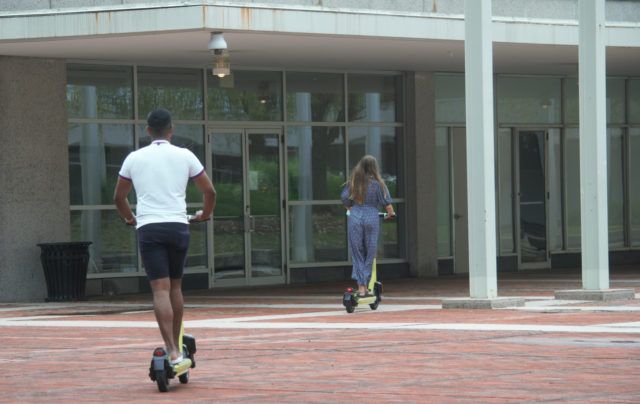
Not sure what I’m talking about?
Have you looked at any of the local Facebook groups, where there’s a moral panic over rental electric scooters? They’re ignorant of how people have tricked out their own scooters previous to LINK landing in Hartford. They have no understanding of physics, being up in arms over the possibility of e-scooter/pedestrian collisions. While I don’t want to be hit by one, I’m far less worried about this because the weight of a person on a scooter is far less than that of someone in an SUV or pickup truck, and the top speed on rental scooters is limited. Those factors, combined with the sheer abundance of heavy vehicles being driven at speeds unsafe for city streets, tells me which scenario is more likely to do me in.
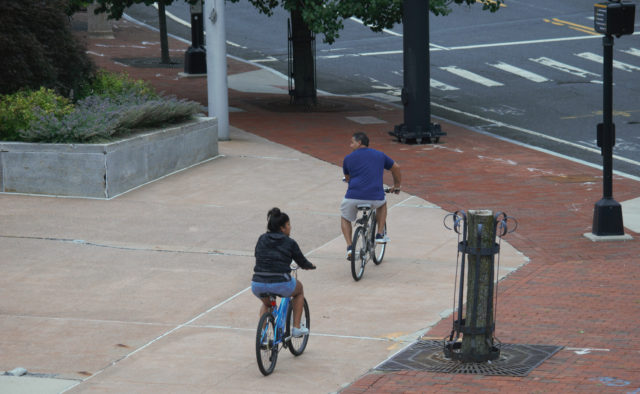
As for the e-scooters, there’s also geofencing; it’s adjustable and makes it so certain areas are off-limits entirely, or, can only be used at slower speeds. Can you imagine how many injuries would be prevented and lives saved if this technology were required in all motor vehicles? If vehicles were prevented from being driven on sidewalks, or if when entering school zones, the speed limit was automatically dropped?
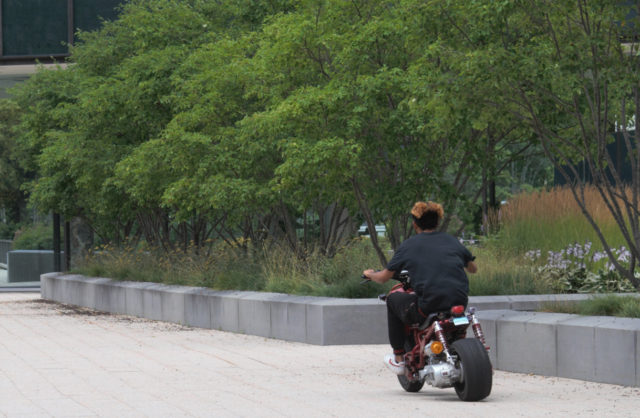
Instead of learning what poses the most risk, there’s a meltdown over scooters. Meanwhile, on the raised plazas that replaced Front Street in downtown, motorcycles and moped-scooters are a regular sight.
Of the two pictured here, one driver was hauling around without much concern about who he was about to run over. The other was being operated with caution and at a speed that felt reasonable. Why are we not mandating that motorcycles and cars have these features, so that drivers/operators without the sense to slow down are forced to?
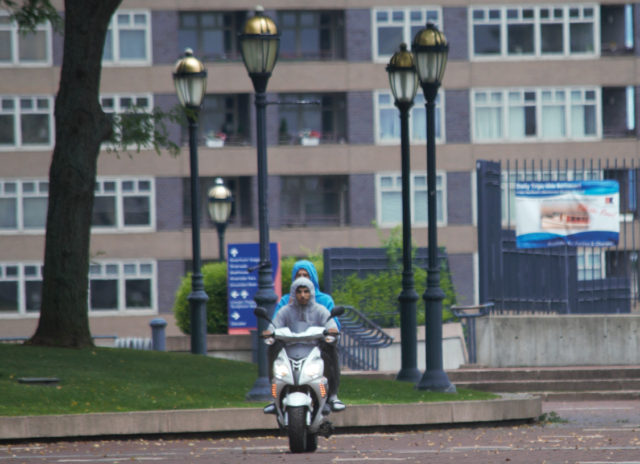
I’m reminded of the fury of some had for what they perceive as a closure. Elizabeth Park has continued to maintain the loop road around the Rose Garden as a space for people.
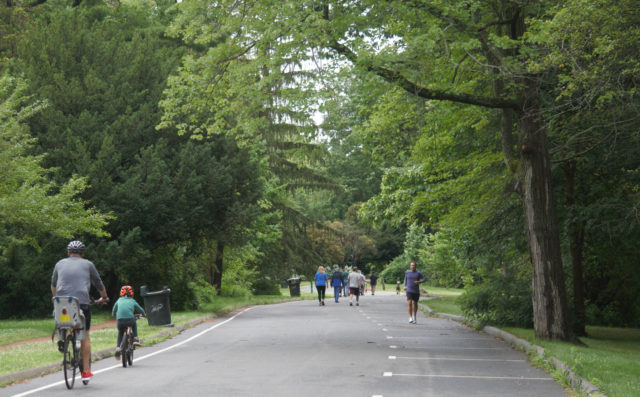
Besides offering a safe space for youngsters to learn how to handle their wheels, removing motor vehicles from this one section of the park makes Elizabeth Park actually feel like a park.
There’s not constant noise from cars starting, idling, being driven.
People can stop to smell the roses without a side of tailpipe emissions.
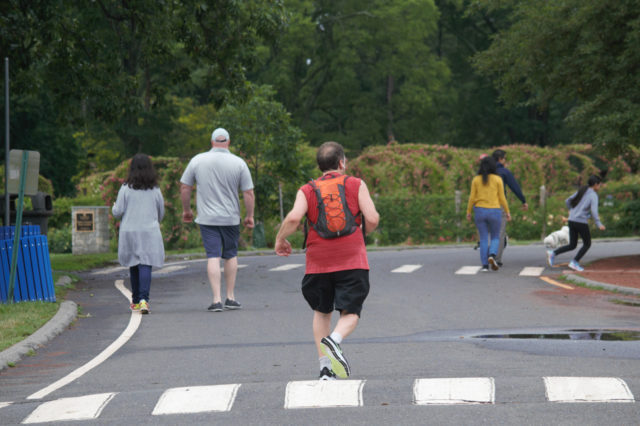
The safety issue can’t be stressed enough.
Before, almost everyone would use the narrow stone path. Cyclists would be in the roadway, and it was almost always adults on those bicycles.
Now, there’s more accessibility, with a flat, paved space that those needing smooth surfaces for mobility can use.
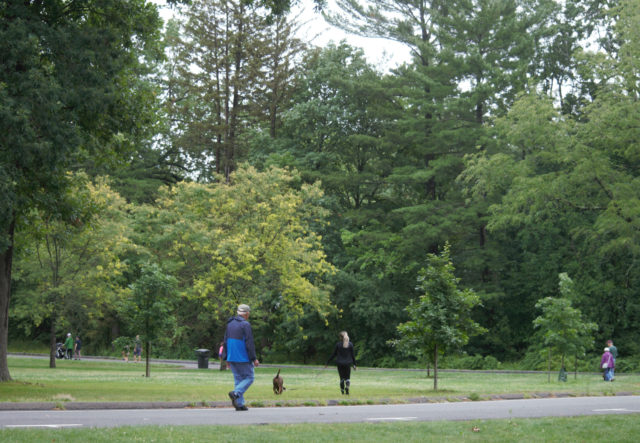
I think a lot about how our sedentary culture is wrapped right up with health problems that would be prevented, or better controlled, by more physical movement. If I had it my way, the only parking in downtown Hartford would be for those with disability placards. Everyone else would have to walk, bike, scoot, or use the bus.
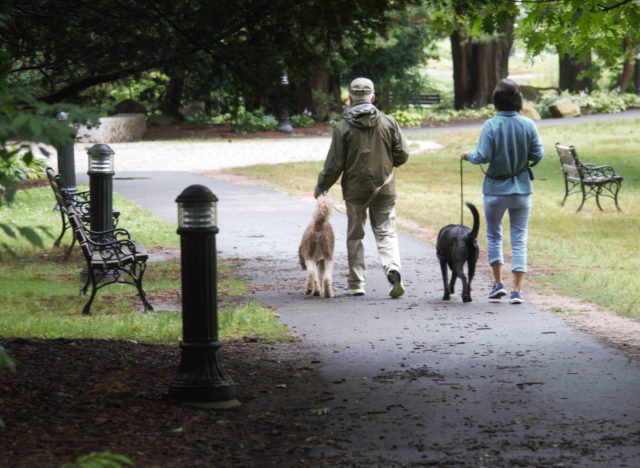
The other day across town, someone moved the giant planters, making Trinity Street less safe for park users. Immediately, residents began to contact the City of Hartford to express their disappointment. We were told this was not a sanctioned change. It was fixed.
Trinity Street goes through Bushnell Park.
Before it was adjusted in 2020, vehicles would be driven at reckless speeds, endangering people trying to cross from one part of the part to the other. Several drivers struck the arch with their vehicles. Buses would park or idle on the street — despite there being no bus stops on the block — making it a challenge for people trying to cross, as the large vehicles would obstruct pedestrians’ view of traffic.

If you don’t like cities because they’re noisy, it’s not the city you have a problem with — it’s the cars. Remove cars from even a few areas, and there’s a noticeable difference. A high speed road near my house has been temporarily closed for construction. If it were up to me, it would never re-open for vehicles.
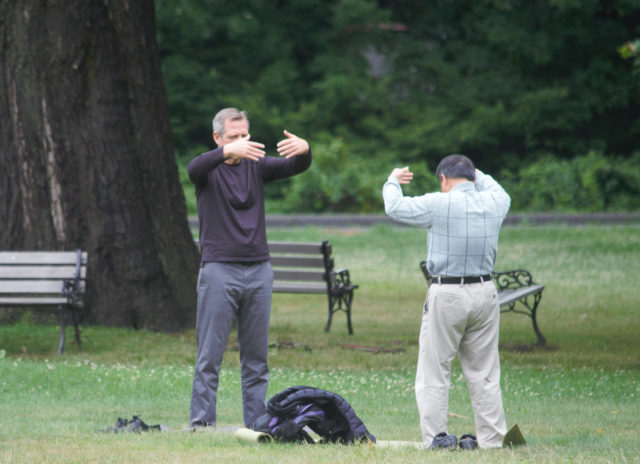
Could we make a trend of this — opting for the health and safety of all over the convenience of only those in motor vehicles? Could we rebuild society to prioritize community over speed?
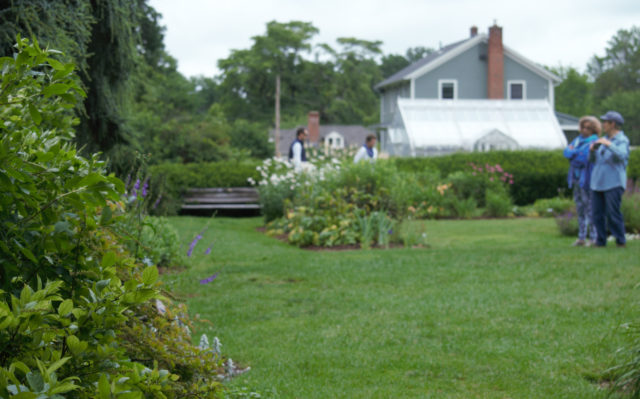
I’ve mentioned this thing called “windshield bias” before, and in a nutshell, it’s a phrase used to describe how those who exclusively drive view the world. It’s how an urban credit union recently closed its branch located in downtown Hartford, making banking inaccessible for those who do not drive, do not have a car readily available, or who do not want to take a long bus ride to the suburbs when the next closest branch — the main one, actually — that’s in Hartford, has neither evening nor weekend hours, nor a walk-up ATM. The app only allows certain types of transactions. Why would they design their main branch, located in a city, as if it were in the suburbs or exurbs? While there is nothing technically barring pedestrians or cyclists from using the drive-thru ATM, have you ever tried this maneuver? Besides the exhaust you’re inhaling while waiting in a line of cars, you’re standing there, vulnerable, knowing all it takes is for the driver behind you to slip his foot off the brake. This is the stuff to spend time worrying about — not the BMX kids or ones on scooters.
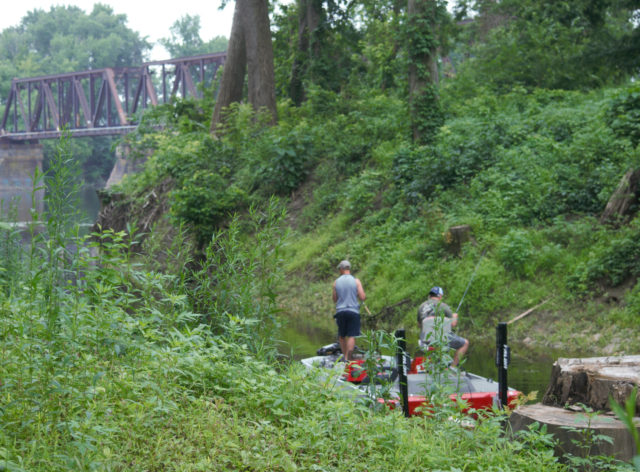
What does all this mobility stuff have to do with whether or not Hartford is a “ghost town”?

I’m getting there. Hold on.
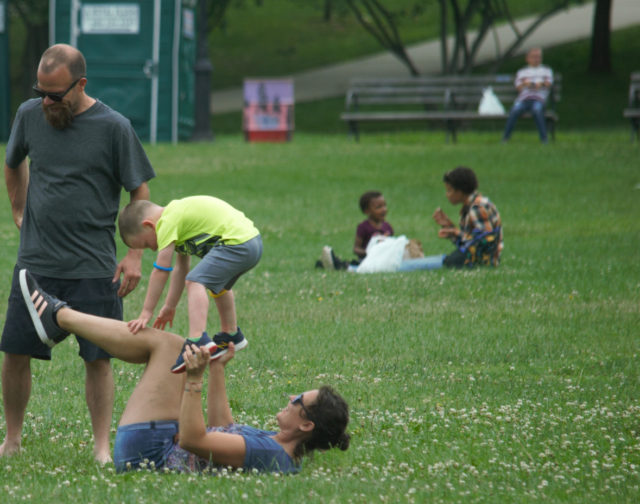
If a person’s perception of a place is what they see while zooming through at 45 MPH on their way to work in one of mono-use buildings that they enter and remain in until punching out, they are not seeing. It’s how people believe there’s no parking in downtown. Walk downtown. Really do it. Don’t walk while playing with your phone. Look up and around. You’ll notice how oversaturated downtown is with public parking lots, garages, and spaces on the streets.
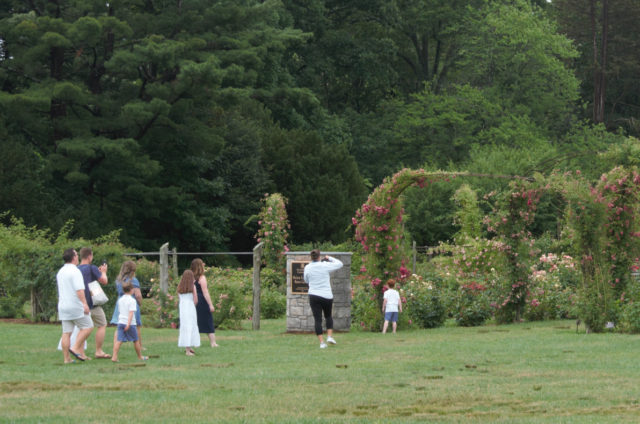
It’s the same with people. They are everywhere, in all kinds of weather. When there are heat advisories, they’re out. When there are windchill advisories, they’re out. When it’s lightly raining, they’re out. Thunderstorms? I’m not gonna trash my camera proving it, but they’re out then too.
Even on holiday weekends when it seems like everyone in Connecticut opted to go to a state park.
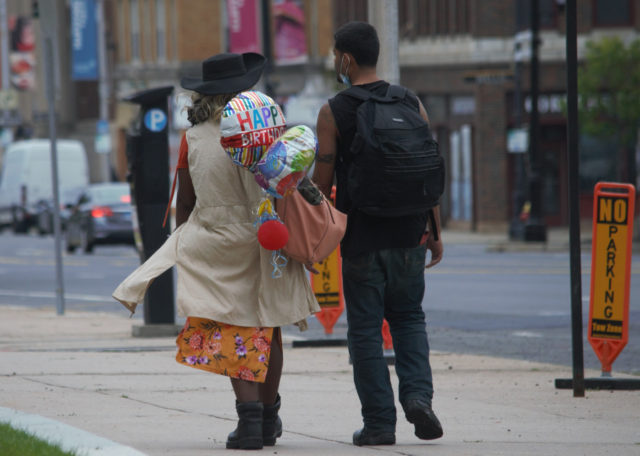
When you start to see people, you also see what needs are and are not being met in terms of infrastructure and safety. When you are pressing the beg buttons waiting and waiting to cross, then getting skipped because of a mechanical malfunction, you gain insight as to why people just cross instead of waiting.
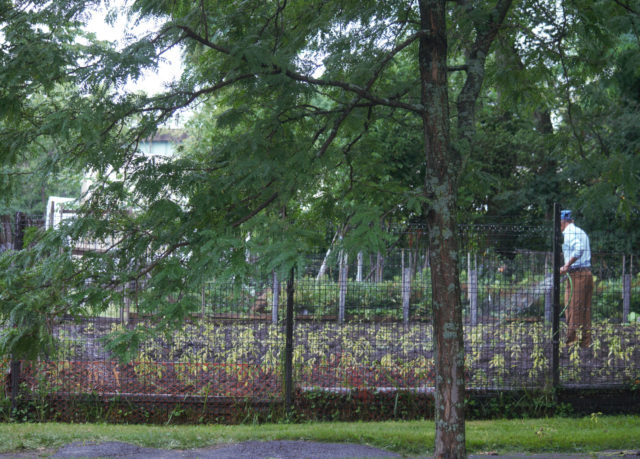
The answer isn’t building-to-building pedestrian bridges or raised plazas. A lot of work has gone into breathing any life into the ones that replaced Front Street, and there remains ample room for improvement to make the space something other than a business-industrial park.
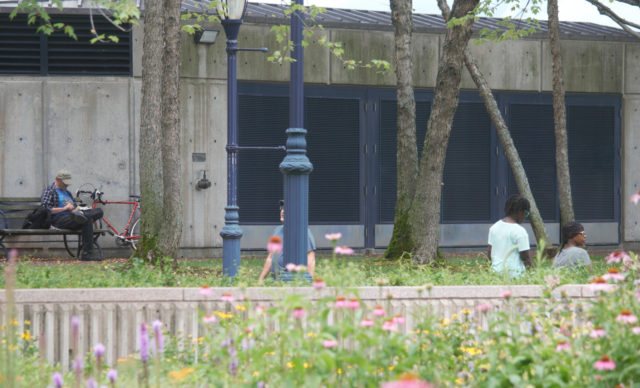
When on foot, you notice how parking is still inexplicably permitted in the middle of an intersection at Prospect and Atheneum Square. How are people expected to cross when a vehicle is allowed to obstruct their view of the intersection? This was temporarily fixed, and then — taking an educated guess — someone must have complained and the powers that be backpedaled.
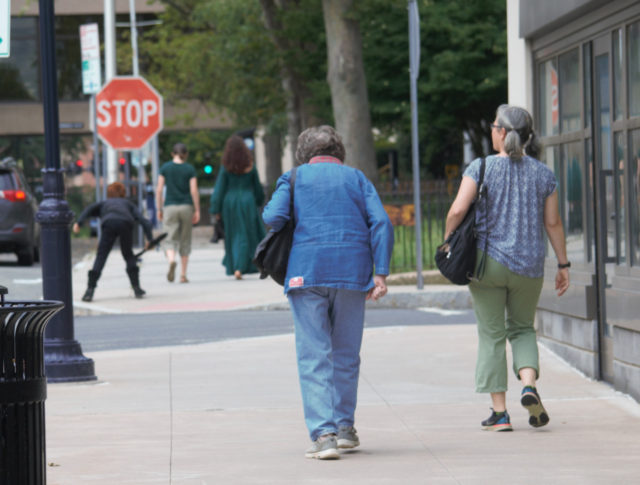
I have no patience for those who would insist that “compromise” is needed. That stopped being cute a decade ago. Climate change is here. Act like it.

Now that you’re caught up, enjoy this photo of a person and some dogs on what is more or less an island in the Connecticut River.
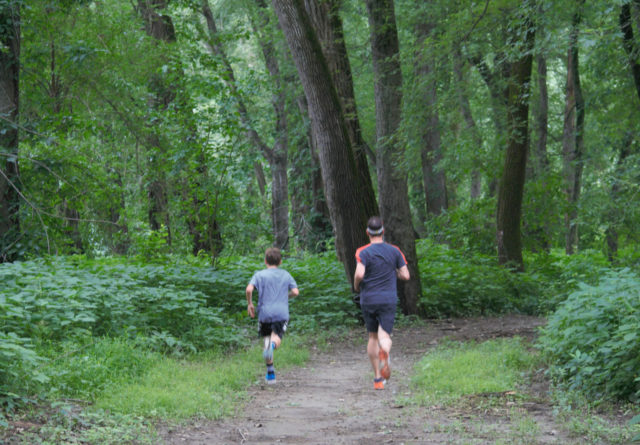
Check out how people are using a wooded area for jogging. Notice how folks are gathering in parks and gardens, on their own and for organized events.

Finally, this one: people walking as a tree sheds its leaves in July, days after a heatwave.
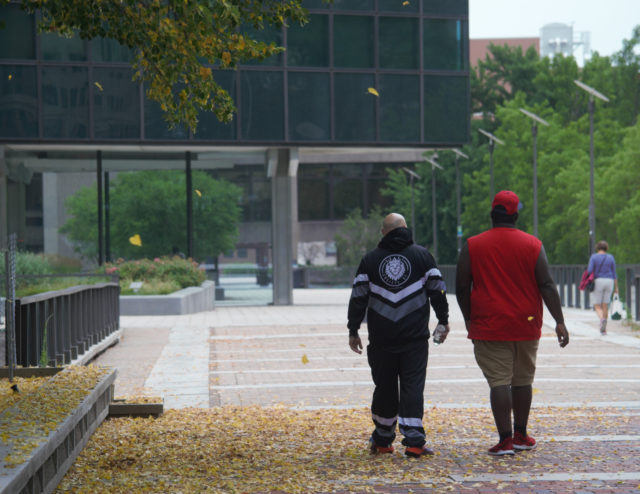
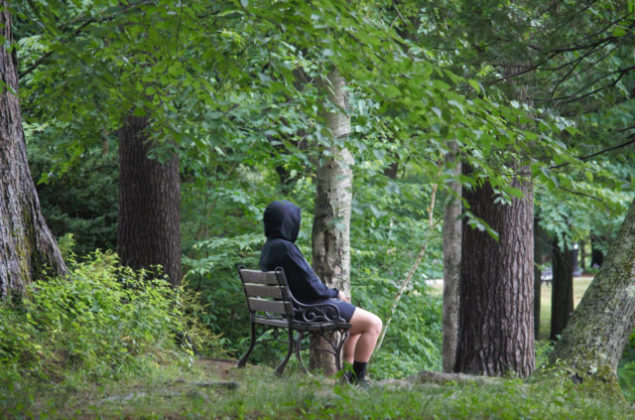
Jim Head
I love everything about this write-up! I am new to e-biking – purchased a cargo bike last Sept as an alternate to taking the bus and I was surprised by the immediate mental & physical health benefits alone. Errands became fun again without having to worry about bus schedules or parking. I do hope more people try it and can experience the joy that it is. I’ve also used the LINK scooters – the geofencing is a great idea. Thanks!
Jack Hale
Well done!